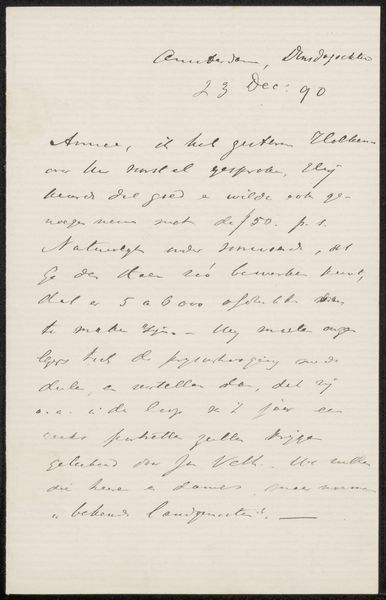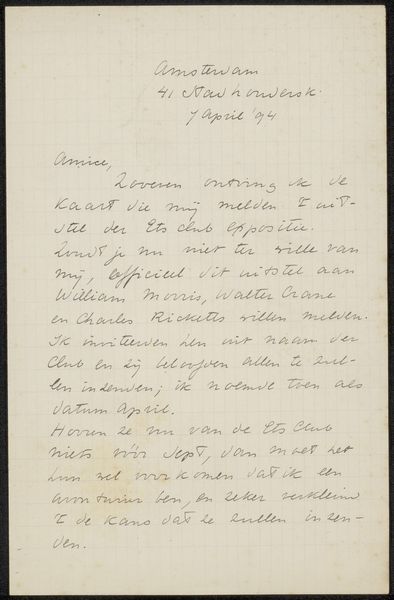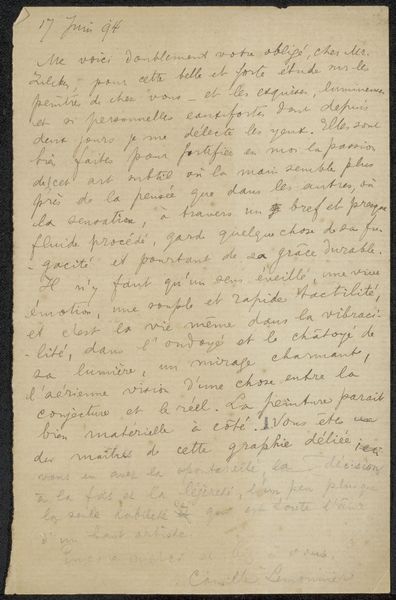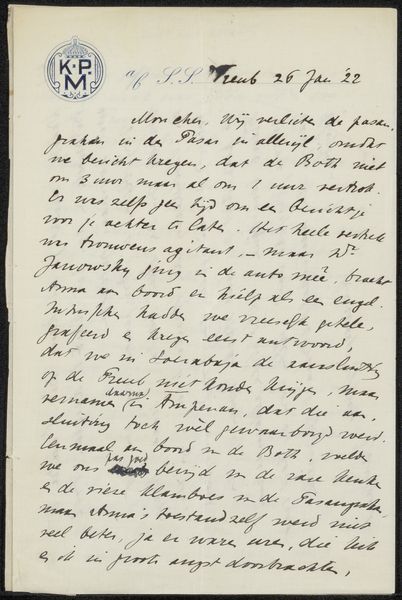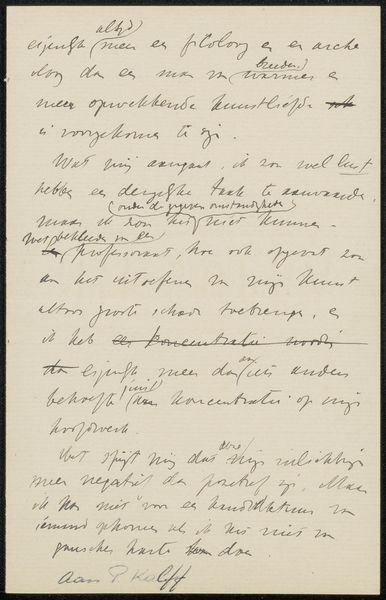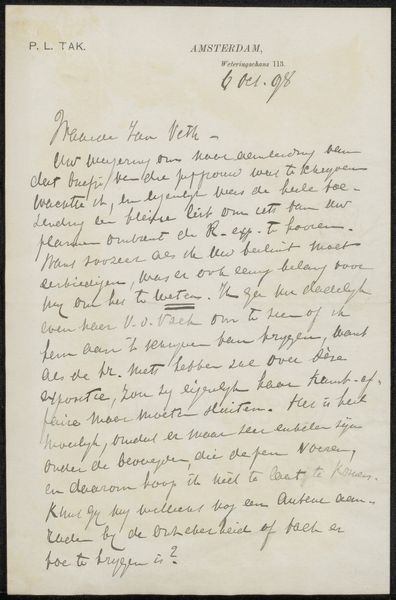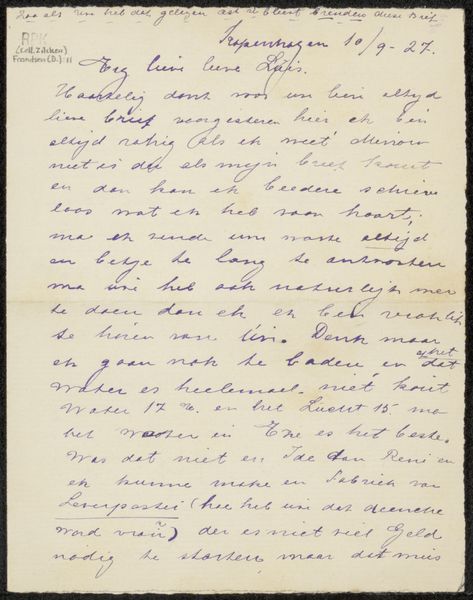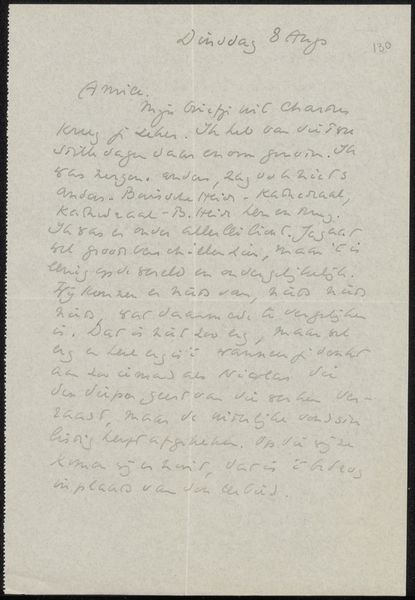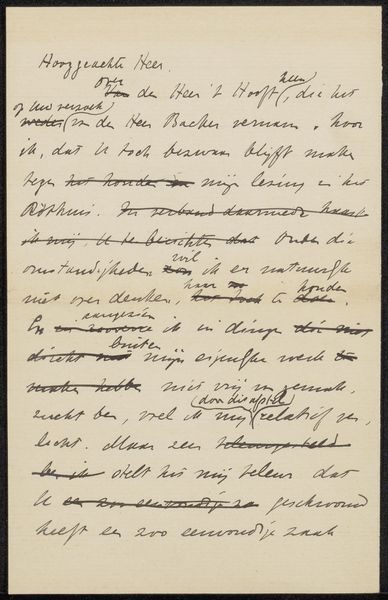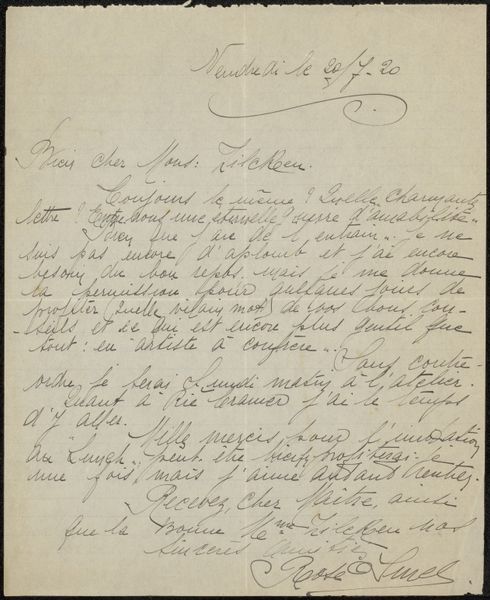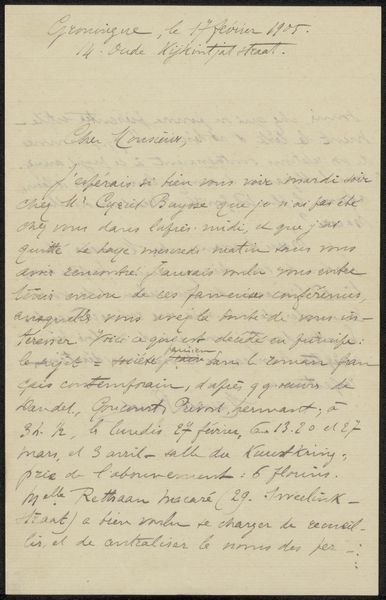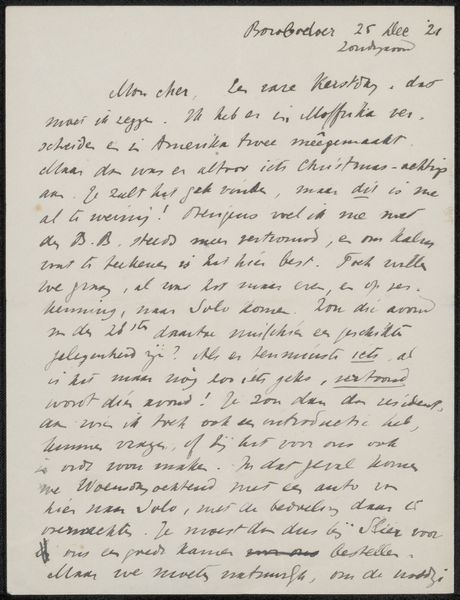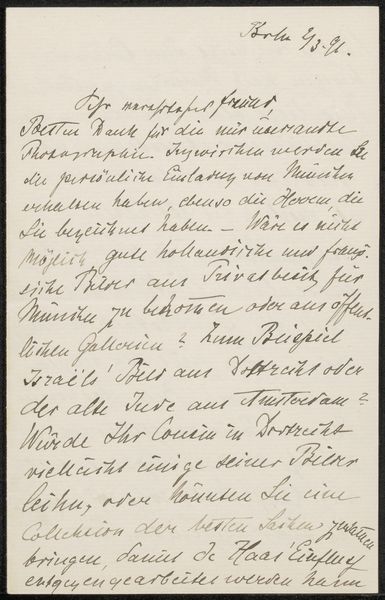
drawing, paper, ink
#
drawing
#
paper
#
ink
#
modernism
#
calligraphy
Copyright: Rijks Museum: Open Domain
Curator: “Brief aan Philip Zilcken,” ink on paper by Richard Nicolaüs Roland Holst, sometime between 1878 and 1930. It’s held at the Rijksmuseum. What strikes you first about this letter, aside from it being a historical artifact? Editor: The script! It feels almost…performative, like the act of writing is as important as the content itself. I mean, it's clearly a letter, but it’s also…something else. What do you see in this piece? Curator: Absolutely. We have to situate this within the broader context of the Arts and Crafts movement. Think about William Morris’s focus on craftsmanship, on elevating the everyday to an art form. Calligraphy, like bookmaking, became a vehicle for social reform, right? It's a deliberate rejection of industrialization, a conscious reclaiming of handcraft. Editor: So, the beauty of the script is inherently political? Curator: I think so. Consider that Holst, like Morris, likely saw the value in pre-industrial modes of production. The act of carefully writing this letter, embellishing it with artistic flair, is a statement about valuing human labor, creativity, even slowing down against the increasing pace of industrial society. Do you think it makes the letter more intimate or more formal? Editor: That's interesting. I’m torn. The elaborate script feels very intentional and performs formality, yet the familiar language breaks that immediately. Perhaps he seeks to show high regard but equality? It shows such care and is visually stunning, like a small rebellion against the machine. Curator: Yes, exactly! This letter, in its own way, speaks volumes about resistance, about finding beauty and meaning in a rapidly changing world. Thank you, this exercise helped me think about the letter with a fresh outlook on its relationship between labor and equality. Editor: Thanks! I hadn’t considered it in relation to labor like that before!
Comments
No comments
Be the first to comment and join the conversation on the ultimate creative platform.
